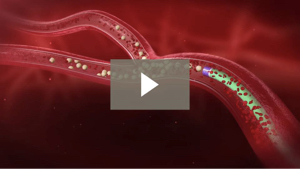Radioembolization is used to treat primary liver cancer and other cancers that have metastasized to the liver. This is an outpatient procedure that involved two to three separate procedures including preparatory and treatment parts.
The preparatory part of the procedure is performed to map out the arteries of the liver and block those that leave the liver and go to other organs. This is done to prevent radioactive resin from traveling to other organs when the treatment dose is given (at your next visit). It also involves injecting a radioactive tracer (used for imaging only) into the liver arteries to perform a “dry run”. This help the Interventional Oncologist avoid administering high dose radioactivity into the organs outside of the liver, calculate a radioactivity dose that can be administered safely and also shows the distribution of the radiation in the liver once administered.
The treatment part of the procedure can be broken up into treating the right and left liver individually or treating the whole liver in one setting. This involves confirming that the liver arterial anatomy has not changed compared to the preparatory part and administering a high dose of radioactivity into the liver. The interventional Oncologist takes advantage of the liver and tumor blood supply characteristics to ensure that the vast majority of the radiation is deposited into the tumors while having minimal impact on the normal liver tissue.
Watch the Physician Mode of Action Animation
These procedures are performed on in an outpatient setting with the patient being discharged home 2-4 hours after the conclusion of the procedure. The patient is prescribed medications to help with any side effects of the treatment. The radiation levels in the patient’s body drop to 50% after 64 hours and the radiation is effectively gone from the patient’s body within 2 weeks.
EXPECTED SIDE EFFECTS
All of the following signs are part of a normal recovery after Radioembolization. Within a month after the procedure, you should be back to your usual self.
Right upper abdominal pain for the first few days to weeks. It may radiate to the shoulder or back. You will be given medicine to help control the pain. This pain usually gets better within the first week.
Extreme fatigue or tiredness for two to four weeks after the procedure.
A poor appetite which may result in weight loss before your appetite returns – continue to eat even if you have no appetite. Small, frequent meals are the best way to prevent weight loss.
It is normal to have a bruise and soreness where the angiogram catheter went in.
We have follow-up appointments scheduled with labs and imaging at customized intervals and are available by phone 24/7 for any issues that may arise.


